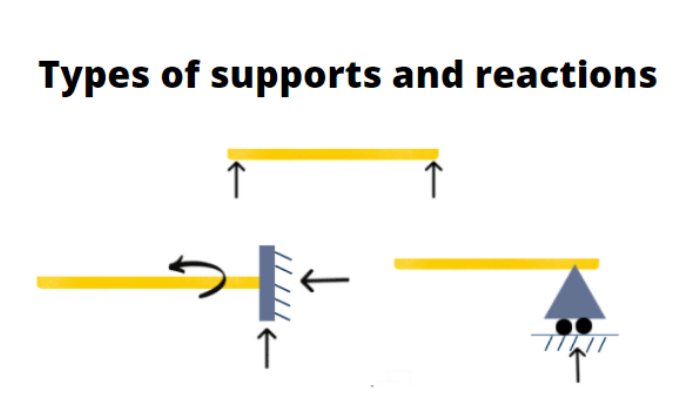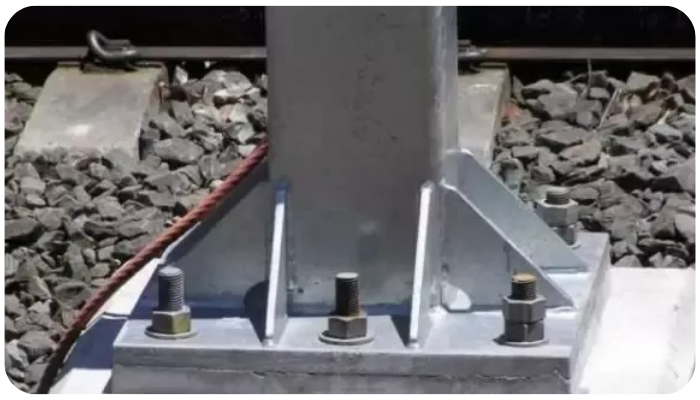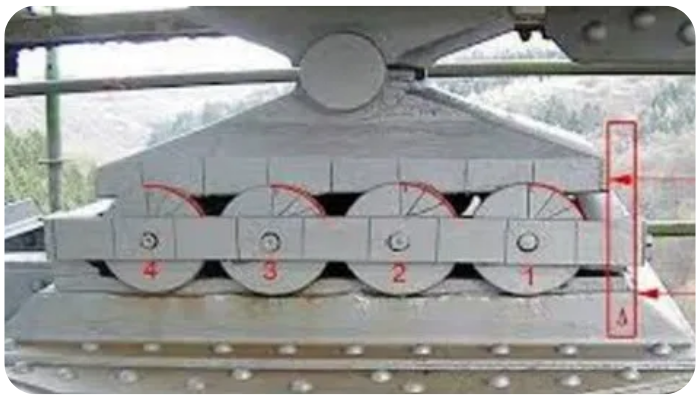Supports connect the member to the ground or some other parts of the structure. Structures need to be supported so that they can remain in equilibrium under any system of forces likely to act on them. These supports develop the force as a Support Reaction.
In structural engineering, there are two types of support,
- External supports
- Internal supports
External Types of supports in beams and Reactions in a Structure
- Simple support
- Fixed support
- Roller support
- Pinned support or hinged support
1. Simple support reaction
A simple support reaction is just supported on which structural member rests. They cannot resist lateral movement and moment like roller supports. They only resist vertical movement of support with the help of gravity.
2. Fixed Support reaction
Fixed Support reactions are rigid supports. Fixed support reactions are restrained against both rotation and translation so they can resist any type of force or moment. To provide good stability to the structure, at least one rigid support should be provided. A beam fixed in the wall is a good example of fixed support.
3. Roller Support and Reactions
Roller support and reactions resist perpendicular forces, but they cannot resist parallel or horizontal forces and moments. It means the roller support will move freely along the surface without resisting horizontal force.
Also read: World’s highest railway bridge in Himalaya
4. Pinned Support or Hing support reactions
Pinned Support or Hing support reactions resist both vertical and horizontal forces, but they cannot resist a moment. The best example of hinged support is the door leaf, which only rotates about its vertical axis without any horizontal or vertical movement. The rotation of pinned support or hinged support is allowed in only one direction and is resisted in other directions.
Hinged supports are also used in three-hinged arched bridges with two supports at the ends and a third hinge at the center of the arch, which is called an internal hinge. It’s a part of the types of supports in beams and reactions.
Also read: Types of structure in civil engineering
Internal Supports and Reactions and Applications in a Structure.
Internal supports are provided internally in the structural member, which means internal support divides the full member into parts.
- Internal hinge
- Internal roller
1. Internal Hinge Support and reaction
The internal hinge also resists translation in both directions and allows only rotation. In structures, for axial members, internal hinges are provided, and for beam members, middle hinges are provided.
These can be widely seen in arch-type bridges at the center of the arch.
2. Internal Roller Support and Reaction
This type of internal roller support is used in tower cranes or harbor cranes so that heavy materials or members can be shifted from one place to another place.
Learn more about the Structural engineering forces, loads, supports, reaction, bending moment, shear force, their diagram, truss, etc, in a single course.
Enroll in the course of basic structural engineering
Conclusion:
Structural engineering and analysis are the most important sub-branch of civil engineering. It is responsible for the whole infrastructure developed around us globally, including buildings, bridges, highways, ports, and many others. This article explains the types of support and their importance for any structure.

PIGSO Learning is a leading ed-tech company in the higher education segment. Focus on research, learning, and practical education.












